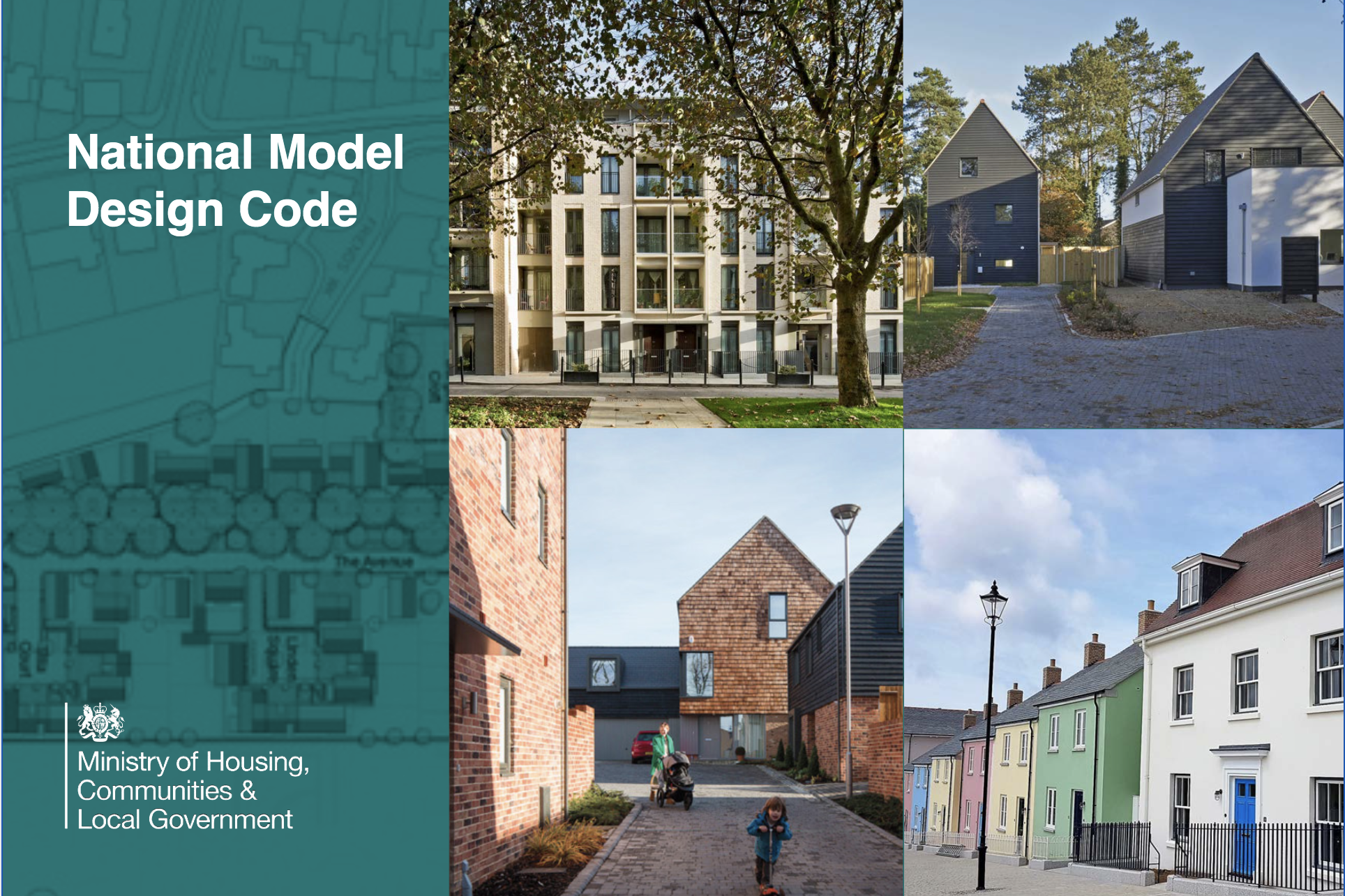Planning and Design Codes
by Michael Jubb
The creation and use of design codes is now becoming a key plank in planning policies at national and local levels.
A key stimulus came from the creation of the Building Better, Building Beautiful Commission, co-chaired by the conservative philosopher Sir Roger Scruton and Nicholas Boys Smith, a banker and adviser to the former Chancellor, George Osborne, and the founder of Create Streets, a research institute working on planning and urban housing. The Commission’s interim and final reports were published in 2019 and 2020.
Design codes featured prominently in last year’s Planning for the Future White Paper, and in the National Design Guide, published in draft along with Part One and Part Two of the National Model Design Code (NMDC) in January this year, with final versions in July.
They make clear that design codes must cover a wide range of issues: the character and context of each area; transport and movement; the natural environment; building density and height; identity and sense of place; streets and public spaces; mix of uses; quality and mix of housing; energy use; and stewardship and lifespan. In short, they cover many of the features currently covered in local plans. How all this might sit with the extension of Permitted Development Rights, and unrestricted conversion of commercial premises to housing is but one of the unresolved questions in the Government’s planning policies. There are also concerns about the lack of urban design specialists in local planning authorities, and whether planners have the capability or the capacity to create design codes.
Both the NMDC and the latest version of the NPPF stress the importance of community engagement. The NMDC specifies that “When preparing design codes, communities need to be involved at each stage of the process”: analysis and scoping: development of a design vision and coding plan; master-planning; and the creation of guidance both generally and covering specific types and areas. But little is said about how broad and effective community engagement might be achieved. If developers themselves take up the suggestion that they might create design codes, it becomes especially unclear how communities might be involved “at each stage of the process”. Discussion on these points will be the focus of a workshop the London Forum of Amenity and Civic Societies is organising with The GlassHouse on 7 October.
The White Paper said that design codes would be given weight in the planning process only if they met the requirement for community engagement.
Whether and how this is being put into effect in the 20 pilot design codes now being developed is not yet clear. Nicholas Boys Smith, appointed in July as Chair of the new Office for Place, has suggested that accrediting design codes will be a central part of its role. How that role will work out for the future remains to be seen.

